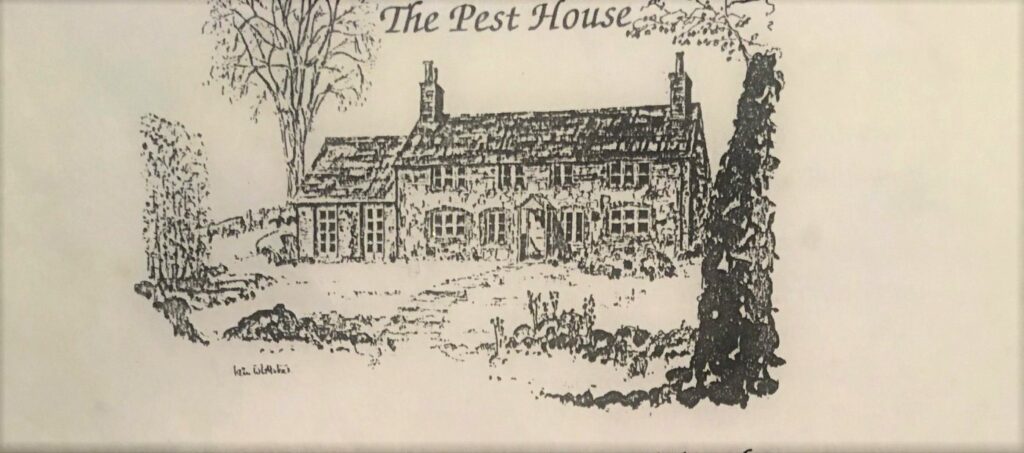

A pest house, plague house, pesthouse or fever shed was a type of building used for persons afflicted with communicable diseases such as tuberculosis, cholera, smallpox or typhus.
The story of the Lambourn Pest House began in June 1754, when Lambourn parishioners petitioned the Earl of Craven, Lord of the Manor of Lambourn for the use of a piece of land to erect a house “which they might at any time remove such poor and impotent that may happen to be inflicted with the smallpox or any other contagious or pestilential illness”
The Earl was pleased to grant the request and the people of Lambourn began the construction of the Pest House. The money was obtained by borrowing £20 from the trust left by Christina Organ in 1633 on which the interest was distributed to the poor of the parish each year. The Parish continued to pay out an equivalent amount from the parish poor rate which was also used to levy the remainder of the money required to build and maintain the Pest House.
Document still exist which detail the bill of materials and the rates of pay. Craftsmen received shilling and sixpence per day, labourers 1 shilling, two women received 8 old pence and several boys 6 old pence per day. It is also noted whose teams of horses drew the wagons bearing the stone, lime and bricks to construct the house. Another account lists by name “persons who did not do any work to ye above house” so shaming them for their lack of civic spirit!



Crowded country villages in the 18th Century, such as Lambourn, would have seen many cases of infectious diseases, the afflicted being sent to the Pest House which was isolated from the village being up on the hill.
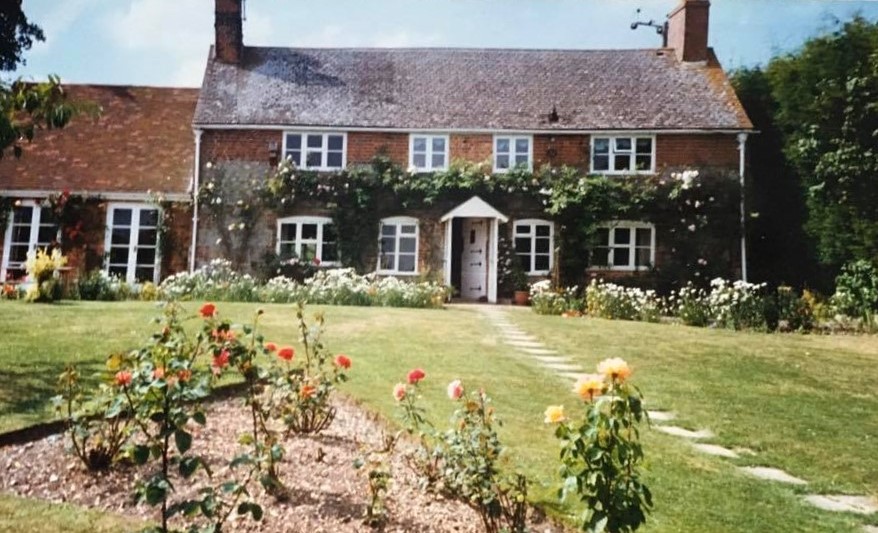
By 1839 conditions must have improved as the house had been turned into two cottages which were let to the poor, the rents being used in accordance with Christina Organ’s will. In 1909 Hungerford Rural District became tenants for the two cottages paying £7 rent per year. Shortly after that the Lambourn United Charities sold the cottages and the money was reinvested.
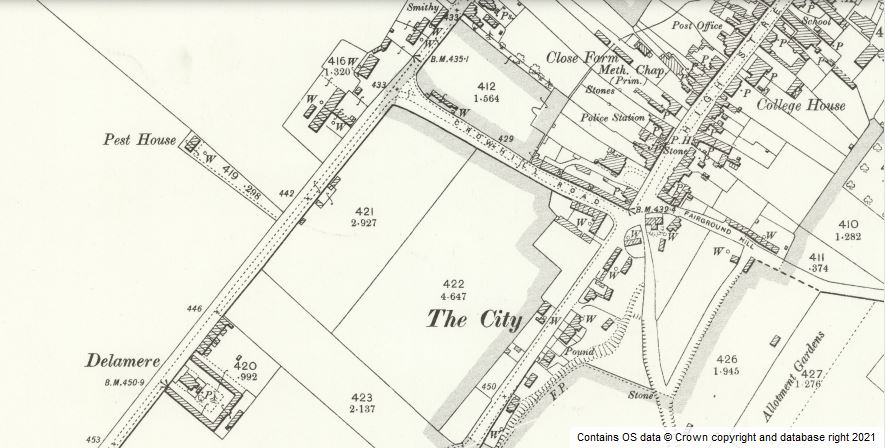
By 1970 the Pest House cottages, had fallen into total disrepair and a demolition order was issued by Hungerford District Council. It seemed that on of Lambourn’s most interesting historic buildings was about to disappear. Fortunately, the cottages were saved and converted back into one house. The credit for saving the Pest House must go to Mrs Val Osmond who fully restored the house and made many improvements. It subsequently became the home of her father. Our thanks to her.
Information kindly shared to Lambourn Website by Denise Mathewson
One of the long time resident of the Pest House was Sarah Little nee Dixon and had spent close to 50yrs living there. She was interviewed by North Wilts Herald in 1934. As the paper is not well copied and unreadable in parts, a copy is included.
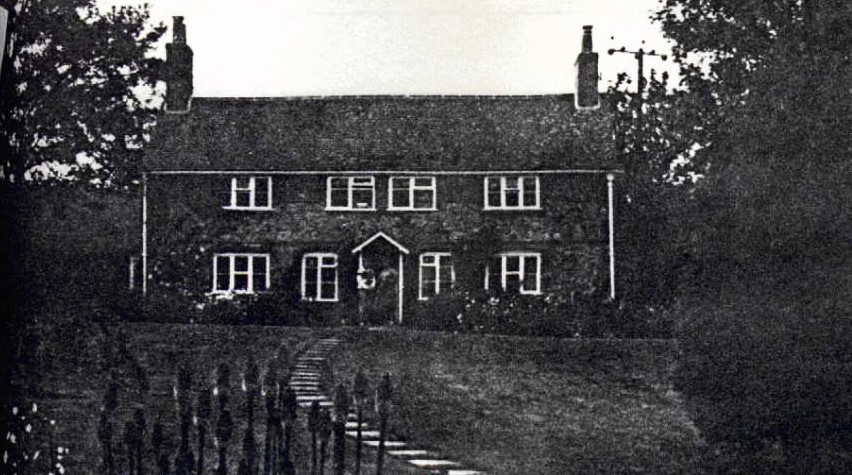
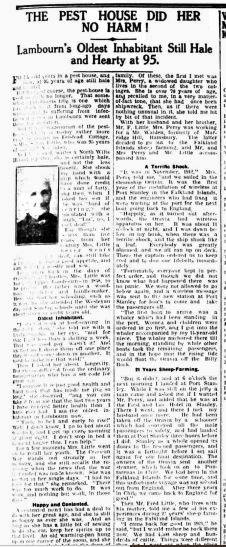
NORTH WILTS HERALD, FRIDAY 23 FEBRUARY 1934
Due to poor condition of newspaper report, it has been transcribed
Fifty odd years in the Pest House, and now, at 95 years of age still hale and hearty.
But ………… of course, the pest house is used………………no longer. That some-what ………… title is one which has……………from long ago day when ………………. Suffering from infection ………in Lambourn were sent there …………
And the octogenarian of the pest house ………… Is today rather more ……………as Felstead Cottage is Mrs Little who was 95 years of age in November. As ……writes a North Wilts Herald reporter she is certainly hale and not less hearty. She shook my hand with a grip which would have done credit to a man of forty and then when I asked her son if she was hard of hearing she jaculated with a laugh. ‘Not me, I ain’t deaf’
For though she is less than five years from her century Mrs Little never wears a………deaf, can still take a needle and thread and sew.
…………. back in the days of ………………Mrs Little was born in Upper Lambourn in 1848 to be ……. Her father was a woodman ………………and hurdle maker. Her………schooling such as it was ……she attended the Wesleyan day and Sunday schools until she was about ……………eight years old.
I started work at ……………scaring in ……then, she told me with a lively twinkle in her eye and for that …………less that a shilling a week. That was good pay wasn’t it? And as fast as I drove them off one place, they would …………down in another. It used to make me that wild!
Then I asked her about longevity. But she is different from the ordinary octogenarian who has a set code for a great age (life)
“I suppose it is just good health and hard work that has made me live so long” she observed. “and you can take it from me that the last two years I have enjoyed better heath than I have ever had. I am the oldest inhabitant in Lambourn now.
“Early to bed and early to rise?” Well, I don’t know, I go to bed about 9 o’clock and I get up every morning at about eight. I don’t stop in bed a moment longer that I can help.”
For a few moments Mrs Little went on to recall her youth. The Crimean War stands out strongly in her memory, and she still recalls the rejoicing when the news that the war had ended was made known. She was ………… in her single days. “I had no time for that” she remarked. “There was too much work to do. It was work and nothing but work in those days.
Happy and Contented
A contented mind has had a deal to do with her great age, and she is still as happy as ever she was. And as long as she has a little bit of sewing to do she can keep her spirits up to that level. An old warming-pan hung up on one corner of the room, and she reminded me that, before the days of hot water bottles and such luxuries, she used this for warming the bed when she was the mother of a large family. Seventeen children she had, including twins, and today 12 of them are living – some in England and others in far distant shores.
“One of my sons was in the Boer War, his helmet was knocked off with a shell and he had a marvelous escape with his life” she told me. “My youngest son served in the last war and had one leg shattered and the other injured. He has an artificial leg now. While in hospital he met a nurse who he married and is now living with her in Australia. He was a postman in Lambourn and two of his brothers also served during the war!
All twelve children have married, and Mrs Little attended each wedding. Only a few years ago, when she was over 90, she went to London by train to see one of her sons living there. Three sons are living in Australia. There are 11 grandchildren, seven of whom, as well as one great grandchild are in the Dominion.
Going to be a Hundred
Mrs Little was married at the age of almost 20 and the man of her choice followed the same occupation as her father. As to the wage he was earning she could not be sure, but she recalled a time when, with one or two children living she was still working, and the wages were: Mr Little 7s.6d: Mrs Little 1s 3d: one son 3s 6d: total income 12s 3d. He husband died some time ago at the age of 75 years.
I asked her as to the future and she ……she said quite confidently and optimistically, “ I don’t mind if I do live to be a hundred so long as I’m well and happy enough”.
And then, as I put the usual formula of questions to her “No, I’ve never been up in an aeroplane, and I don’t ever want to go there” Why, I want to …………as long as I can” Her widowed daughter Mrs Perry said, …………. “Doctor saw her the other day, she was having her dinner then …………. said she was keeping remarkable well. He said he thinks she will………………few years yet and perhaps ……… hundred. Her appetite is good, and she has nothing to worry about.
……………… for Mrs Little – a remarkable ……..with a no less remarkable family. Of these, the first I met was Mrs Perry, a widowed daughter who lives in the second of the two cottages. She is over 70 years of age, and recalled to me, in a very matter-of-fact tone, that she had once been shipwrecked. Then, as if there were nothing unusual in it, she told me bit by bit of that incident.
With her husband and her brother, Mr F Little, Mrs Perry was working for a Mr Walden, formerly of Marridge Hill, Ramsbury. The latter decided to go out to the Falkland Islands sheep farming and Mr and Mrs Perry and Mr Little accompanied him.
A terrible shock
“It was in November, 1912” Mrs Perry told me, “and we sailed in the steamship Oravia. It was the first year of the installation of wireless at Port Stanley in the Falkland Islands, and the engineers who had fixed it were waiting at the port for the next boat going back to England.
“Happily, as it turned out afterwards, the Oravia had wireless apparatus on her. It was about 11 o’clock at night, and I was down below in my bunk when there was a terrific shock, and the ship shook like a leaf. Everybody was greatly alarmed, and we all ran up on deck. There the captain ordered us to keep cool and to don our lifebelts immediately.
“Fortunately everyone kept in perfect order and though we did not know what had happened there was no panic. We were not allowed to go below again, and a wireless message was sent to the new station at Port Stanley for boats to come and take the passengers off.
“The first boat to arrive was a Whaler which had been standing in the port. Women and children were ordered to go first, and I got into the whaler accompanied by my 14 year old niece. The whaler anchored there till the morning, standing by while other boats took the remaining passengers and in the hope that the rising tide would float the Oravia off the Billy Rock.“But it didn’t and at 6 o’clock the next morning I landed at Port Stanley. While I was still on the jetty a man came and asked me if I wanted Mr Perry and added that he was at the First and Last Hotel in Stanley. There I went, and there I met my husband once more. He had been taken off the Oravia by a schooner which had conveyed all the male passengers to safely and had landed them at Port Stanley three hours before I did. Stanley as a whole opened it doors to the rescued passengers and it was a fortnight before I set sail again for our final destination. The owners of the Oravia sent another steamer which took us on to Puntarenas in Chile. We had been in the Falkland Islands for some time and the unfortunate voyage was my second out from England. After three years in Chile, we came back to England for good”
21 Years Sheep-Farming
Then Mr Fred Little, who lives with his mother told me a few of his experiences during 24 years’ sheep farming in the Falkland Islands.
“I came back for good in 1921” he said. “but I would rather be back there now. We had 4,500 sheep and hundreds of cattle. Things were different then, for I went out when the place was first opened. We used to keep the sheep for the hides and tallow alone. When the sheep were killed the hides were removed and the tallow extracted, and the meat just thrown away – there was no way of keeping it then. The tallow would be sent to England, but at that time they never thought of tinning the meat.”
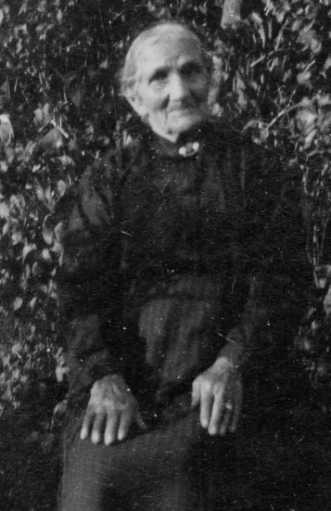

Many thanks to William Little from Victoria, Australia for agreeing to share his family photos with the website
To elaborate on the infectious diseases, although this was long before the Pest House. There have been many years of disease suffered thought the world. Between 1346-1353 was the Black Death, most fatal and resulting in 75-200 million deaths.
Various outbreaks were recorded during the 14th century and 1479 also saw great mortality and death mainly in London. The most virulent epidemic of 15th Century was the Plague of 1479-1480. Throughout the 16th century it was on and off but between 1585-1587 the Bubonic Plague spread throughout the country followed by several outbreaks from 1625-1645
1665 was the Great Plague affecting London in the main, it killed an estimated 100,000 people in 18 months caused by Yersinia Pestis Bacterium, the bite of a Rat flea.
From 1609-1610 there were several out breaks of Bubonic Plague and Lambourn lost 28 of the community in 1609:
| John SEYMOR Margaret RIDER uxor Agnes SEYMOR John PERKINS Agnes REINOLDS Robert SPINAGE Michel HILL Agnes GARNER Joane WALDRON Joane HEDGES uxor Thomas HEDGES William WALDRON Alice WALDRON uxor | Richard WALDRON William WALDRON Agnes STOCKARS John WALDRON Thomas CLEMENT John CRAPON Sibil CRAPON uxor Mary WILDER Nicholas THRIFT Marg THRIFT Erasmus THRIFT Agnes GARNER uxor Elizab WALDRON |
Liz Beard 2021

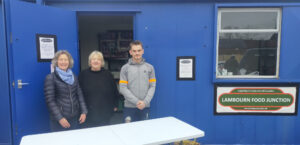


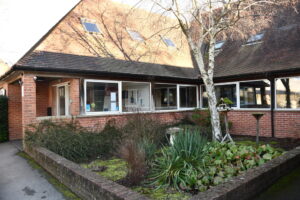
Liz, that is excellent I really enjoyed reading it and learnt a few things. I wish I had all of that data when I did an essay on it at school.
Very kind of you to say Jill! …sadly we didn’t have the joys of the internet then! made it so much harder. It was a very interesting project to write about!
Fascinating and many congratulations to Val Osmond for her contribution!
A fascinating read with wonderful photos and maps
Thank you.
Will there be more items like this about buildings and possibly people of Lambourn?
Penny Brewer
Thank you Penny, pleased you enjoyed reading it. There is another one about the Workhouse which I put on but sadly no photos of it! I will try and find another project!!
Although I was only 4 years old, I remember moving into this house and having fond memories of the place. We had a large kitchen at the back with a walk in larder. I remember the milk and butter being on the concrete floor. From the lounge there was a walk in cupboard which we played shops in. Empty kids size cereal boxes on the shelves for sale. Just outside our cottage a small lawn and then a few plum trees. Then dad grew vegetables in a very long garden. At the bottom was a garage I think just made of wood with a drive way in front. Although haunted by a regular supposedly man knocking the kitchen door, it wasn’t scarey at all. We must have been there from 1966-1968 Ken and Mary Hulse and our neighbour Mickey Flynn.
Marie Hopwood